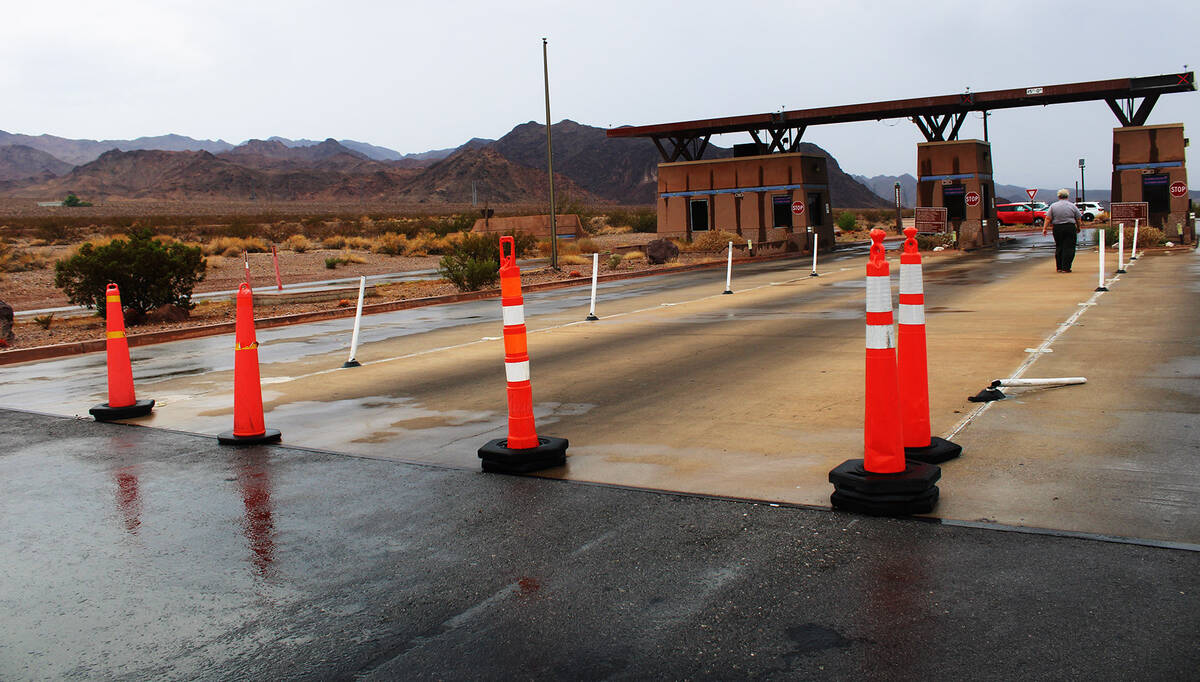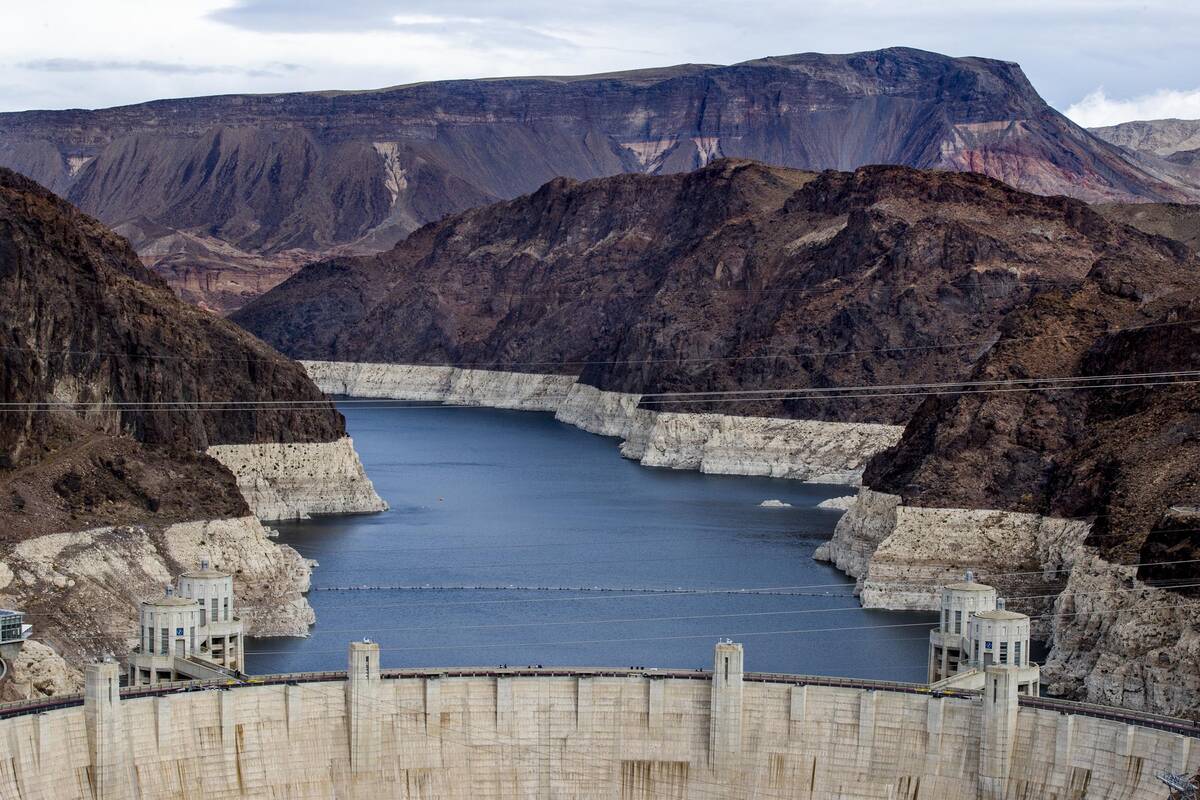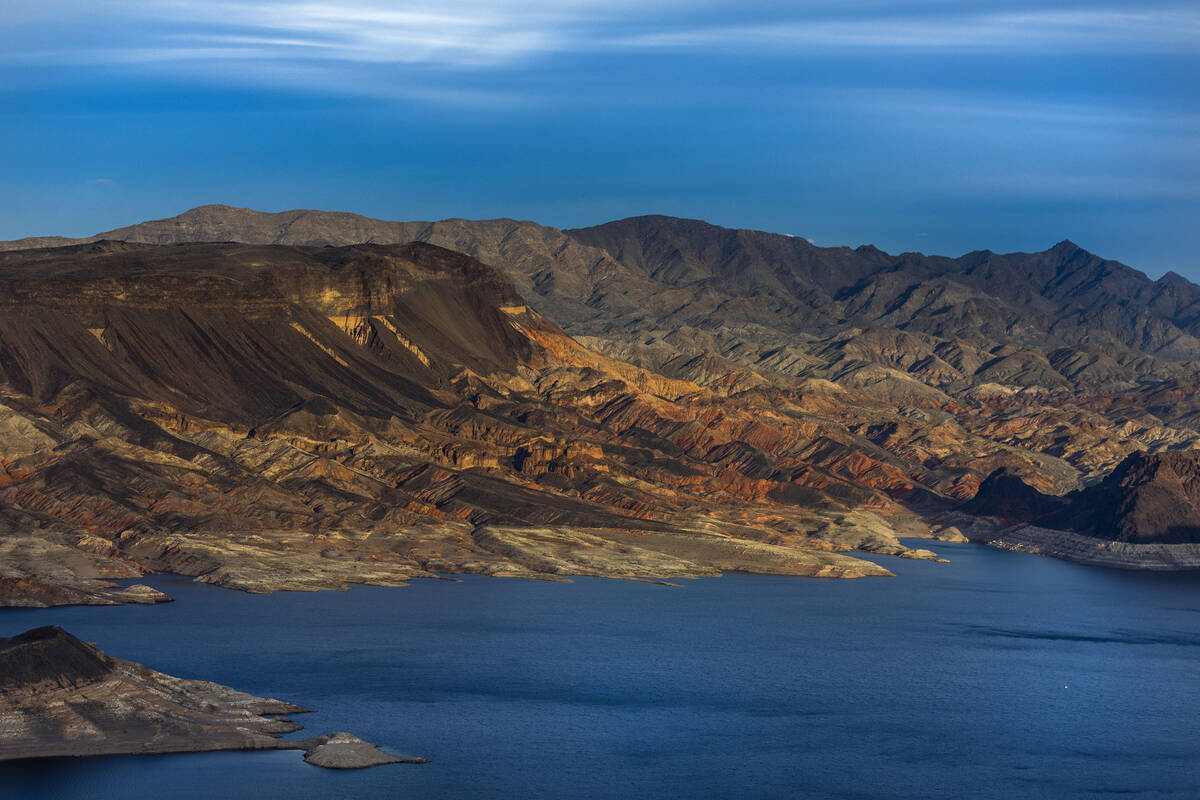Did Hilary give Lake Mead a big boost? Not exactly
This weekend brought nearly a monsoon season’s worth of precipitation in just a few days. But that heavy rainfall likely had little effect on Lake Mead’s water levels.
The reservoir sat at about 1,063.4 feet in elevation when the rains started on Friday. By Monday night, it had ticked up to 1,063.8.
While it might seem easy to attribute that rise to the rains brought by Tropical Storm Hilary, it was almost identical to the 0.43-foot climb Lake Mead saw from Aug. 5 to Aug. 8, when the valley had a grand total of 0 inches of rain.
“When we see even significant rainfall in the Las Vegas Valley and the benefit to Lake Mead from that rainfall and all of that runoff, you are looking at, at best, tenths of an inch in changes. But a lot of times it’s closer to hundredths of an inch,” said Bronson Mack, spokesman for the Southern Nevada Water Authority.
The water levels of Lake Mead, the 247-square-mile reservoir east of Las Vegas, are far more affected by the upstream releases at Glen Canyon Dam at Lake Powell, Mack said.
And there has been a lot more water flowing between those two reservoirs since this spring, when the U.S. Bureau of Reclamation announced that the exceptional winter snowpack would allow it to release 2.5 million acre-feet more water than initially anticipated from Glen Canyon Dam to Lake Mead through the end of September.
Since the start of those higher releases, Lake Mead’s surface has jumped up nearly 14 feet, according to the most recent data from the bureau.
“There’s no question that the releases from Lake Powell down to Lake Mead have a much bigger impact on Lake Mead’s water levels than any precipitation event that we have here,” Mack said. “You’re talking about hundreds or thousands of acre-feet that could be released, as opposed to thousands of gallons of water entering the lake from precipitation.”
That’s not to say that Hilary is having no effect on Lake Mead or the Colorado River system as a whole. Those effects are just harder to quantify.
“The rain we received due to the Tropical Storm Hilary and runoff into the tributaries that enter Lake Mead as well as reduced releases from Hoover Dam — due to a decrease in downstream demand — have had some impact on the lake’s elevation,” Bureau of Reclamation spokesman Doug Hendrix said in an email. “While the amount of precipitation received in the lower basin and from tributary inflows helps, the greatest source of water for Lake Mead is still snow melt and flows from the upper basin.”
Those reductions in demand often take the shape of residential and commercial customers using less water for irrigation, something the Las Vegas Valley did see over the weekend, Mack said.
Historically, big rain events in the Southwest have led to farmers and other agricultural water users in the lower Colorado River basin modifying their water orders to take advantage of heavy rainfall, too.
This year, water releases from Lake Mead are expected to be the lowest in 30 years, the Bureau of Reclamation said last week.
The Las Vegas Valley Water District typically delivers around 400 million gallons a day this time of year, according to Mack. On Friday, those deliveries dipped to about 374 million gallons, and fell to 314 million gallons on Saturday as Hilary dumped about a fifth of an inch on the valley, which Mack said was a strong indication that Las Vegans had shut off their sprinkler systems as the rain fell.
“When we get these kinds of precipitation events in Southern Nevada, our biggest benefit to Lake Mead is simply by reducing our outdoor use,” Mack said.
Rainfall can on rare occasions affect Lake Mead’s levels, such as the winter 2010 flood on the Virgin River that federal officials estimated at the time sent enough water downstream to boost the lake by about a foot and a half.
Contact Colton Lochhead at clochhead@reviewjournal.com.

























